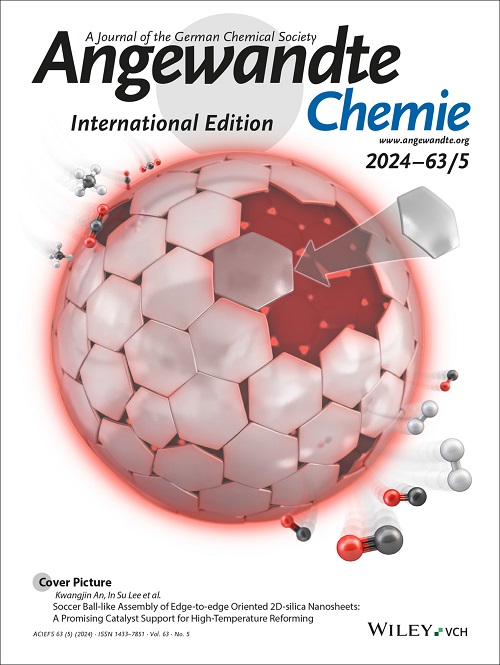Activating Molybdenum Peroxide Scissors for Converting Polyamide Plastic into Low Carbon Alcohols
IF 16.1
1区 化学
Q1 CHEMISTRY, MULTIDISCIPLINARY
引用次数: 0
Abstract
Direct chemical conversion of plastic waste into low-carbon oxygenates, rather than carbon dioxide, with renewable energy, is important yet challenging. Due to the high C-X (X = C, H, N) bond energy, fully optimized catalysts are required to enable precise bond cleavage for boosted efficiency and selectivity. Here, we report adaptable and recyclable molybdenum peroxide photocatalysts that demonstrate chemical scissors for the selective conversion of polyamide to alcohol. Our experiments and calculations show that the dimensionally adaptable Mo(+5.8)-(O2) is activated via a ligand-to-metal charge transfer (LMCT) process for localized catalysis under illumination to precisely cleave C-X bonds to generate C2 and C1 alcohols. The additional hydrogen peroxide provides proton and peroxide conditions that facilitate the activation and regeneration of the catalytic scissors. The precise structures of the chemical scissors ultimately create the conditions for the precise oxidation and cutting of PA6 into methanol with an efficiency of 2.55 mmol·L−1·h−1 and a selectivity of 82.4%. This work provides insights into the role of adaptable metal peroxides in precisely cutting C-X bonds, which are critically important for the efficient and selective chemical conversion of plastic wastes.求助全文
约1分钟内获得全文
求助全文
来源期刊
CiteScore
26.60
自引率
6.60%
发文量
3549
审稿时长
1.5 months
期刊介绍:
Angewandte Chemie, a journal of the German Chemical Society (GDCh), maintains a leading position among scholarly journals in general chemistry with an impressive Impact Factor of 16.6 (2022 Journal Citation Reports, Clarivate, 2023). Published weekly in a reader-friendly format, it features new articles almost every day. Established in 1887, Angewandte Chemie is a prominent chemistry journal, offering a dynamic blend of Review-type articles, Highlights, Communications, and Research Articles on a weekly basis, making it unique in the field.

 求助内容:
求助内容: 应助结果提醒方式:
应助结果提醒方式:


